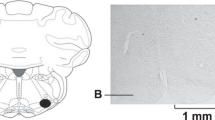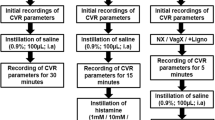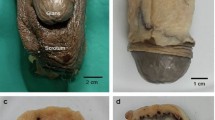Abstract
The objectives of this work were to evaluate the contributions of the ancillary penile nerves to penile erection in male rats in vivo. We investigated the effects of unilateral and bilateral transection of the cavernous nerve (main penile nerve) on the increase in intracavernous pressure (ICP) following electrical stimulation of the medial preoptic area (MPOA) in male rats in vivo. After unilateral or bilateral transection of the cavernous nerve (main penile nerve), the ICP responses showed decreases of 28% and 55%, respectively compared to those ICP responses before transection. In other words, even after bilateral transection of the cavernous nerve, significant increases in the ICP response following central stimulation were observed. In contrast to these findings, the ICP response was completely eliminated following bilateral pelvic nerve transection. These data suggested that the ancillary penile nerves, which originate from the major pelvic ganglia, have a complementary role to the cavernous nerves in the autonomic motor innervation of the penis.
This is a preview of subscription content, access via your institution
Access options
Subscribe to this journal
Receive 8 print issues and online access
$259.00 per year
only $32.38 per issue
Buy this article
- Purchase on Springer Link
- Instant access to full article PDF
Prices may be subject to local taxes which are calculated during checkout
Similar content being viewed by others
References
Andersson K-E, Wagner G. . Physiology of penile erection. Physiol Rev 1995 75, 191–236.
Giuliano F, Rampin O, Benoit G, Jardin A. . Neural control of penile erection. Urol Clin North Am 1995 22, 747–766.
Dail WG, Harji F, Gonzales J, Galindo R. . Multiple vasodilator pathways from the pelvic plexus to the penis of the rat. Int J Impot Res 1999 11, 277–285.
Dail WG, Trujillo D, de la Rosa D, Walton G. . Autonomic innervation of reproductive organs: analysis of the neurons whose axons project in the main penile nerve in the pelvic plexus of the rat. Anat Rec 1989 224, 94–101.
Langworthy OR. . Innervation of the pelvic organs of the rats. Invest Urol 1965 2, 491–511.
Purinton PT, Fletch TF, Bradley WE. . Gross and light microscopic features of the pelvic plexus in the rat. Anat Rec 1973 175, 697–706.
Zvara P et al.Neurogenic erectile dysfunction: the course of nicotinamide adenine dinucleotide phosphate diaphorase-positive nerve fibers on the surface of the prostate. Urology 1996 47, 146–151.
Quinlan DM et al.The rat as a model for the study of penile erection. J Urol 1989 141, 656–661.
Quinlan DM, Nelson RJ, Walsh PC. . Cavernous nerve grafts restore erectile function in denervated rats. J Urol 1991 145, 380–383.
Sato Y, Christ G. . Differential ICP responses elicited by electrical stimulation of medial preoptic area. Am J Physiol 2000 278, H964–970.
Giuliano F et al.Erectile response to hypothalamic stimulation in rats: role of peripheral nerves. Am J Physiology 1997 273, R1990–1997.
Eastham JA, Scardino PT. . Radical prostatectomy. In: Walsh PC, Retik AB, Vaughan ED Jr, Wein AJ (eds). Cambell's Urology, 7th edn. Saunders: Philadelphia 1998, Chapter 85 2547–2564.
Walsh PC. . Anatomic radical retropubic prostatectomy. In: Walsh PC, Retik AB, Vaughan J: ED, Wein AJ (eds). Cambell's Urology, 7th edn. Saunders: Philadelphia 1998, Chapter 86 2565–2588.
Christ GJ et al.Intracorporal injection of hSlo cDNA in rats produces physiologically relevant alterations in penile function. Am J Physiol 1998 275, H600–608.
Rehman J et al.Diminished neurogenic but not pharmacological erections in the 2- to 3-month experimentally diabetic F-334 rat. Am J Physiol 1997 272, H1960–1971.
Burnett AL et al.Nitric oxide: a physiologic mediator of penile erection. Science 1992 257, 401–403.
Carrier S et al.Regeneration of nitric oxide synthase-containing nerves after cavernous nerve urotomy in the rat. J Urol 1995 153, 1722–1727.
Lepor H et al.Precious localization of the autonomic nerves from the pelvic plexus to the corpora cavernosa: a detailed anatomical study of the adult male pelvis. J Urol 1985 133, 207–212.
Burnett AL et al.Immunohistochemical localization of nitric oxide synthase in the autonomic innervation of the human penis. J Urol 1993 150, 73–76.
Walsh PC, Mostwin JL. . Radical prostatectomy and cystoprostatectomy with preservation of potency. Results using a new nerve-sparing technique. Br J Urol 1984 56, 694–647.
Lue TF, Zeineh S J, Schmidt RA, Tanagho EA. . Neuroanatomy of penile erection: its relevance to iatrogenic impotence. J Urol 1984 131, 273–280.
Meisel RL, Sachs BD. . The physiology of male sexual behavior. In: Knobil E, Neill J (eds). The Physiology of Reproduction Raven: New York 1994 3–107.
Paick JS, Lee SW. . The neural mechanism of apomorphine-induced erection; an experimental study by comparison with electrostimulation-induced erection in the rat model. J Urol 1994 152, 2125–2128.
Montorsi F . Recovery of spontaneous erectile function after nerve-sparing radical retropubic prostatectomy with and without early intracavernous injections of alprostadil: results of a retrospective, randomized trial. J Urol 1997 158, 1408–1410.
Mulcahy JJ. . Erectile function after radical prostatectomy. Semin Urol Oncol 2000 18, 71–75.
Walsh PC, Marschke P, Ricker D, Burnett AL. . Patients reported urinary continence and sexual function after anatomic radical prostatectomy. Urology 2000 55, 58–61.
Kao TC et al.Multicenter patient self-reporting questionnaire on impotence, incontinence and stricture after radical prostatectomy. J Urol 2000 163, 858–864.
Stanford JL et al.Urinary and sexual function after radical prostatectomy for clinical localized prostate cancer: the Prostate Cancer Outcome study. JAMA 2000 283, 354–360.
Zippe CD et al.Role of viagra after radical prostatectomy. Urology 2000 55, 241–245.
Rabbani F et al.Factors predicting recovery of erections after radical prostatectomy. J Urol 2000 164, 1929–1934.
Lerner SE et al.A combined laparoscopic pelvic lymph node dissection and modified belt radical perineal prostatectomy for localized prostatic adenocarcinoma. Urology 1994 43, 493–498.
Breza J, Abosief SR, Orivis BR. . Detailed anatomy of penile neurovascular structures: surgical significance. J Urol 1989 141, 437–443.
Polascik TJ, Walsh PC. . Radical retropubic prostatectomy: the influence of accessory pudendal arteries on recovery of sexual function. J Urol 1995 153, 150–152.
Author information
Authors and Affiliations
Corresponding author
Rights and permissions
About this article
Cite this article
Sato, Y., Rehman, J., Santizo, C. et al. Significant physiological roles of ancillary penile nerves on increase in intracavernous pressure in rats: experiments using electrical stimulation of the medial preoptic area. Int J Impot Res 13, 82–88 (2001). https://doi.org/10.1038/sj.ijir.3900650
Published:
Issue Date:
DOI: https://doi.org/10.1038/sj.ijir.3900650
Keywords
This article is cited by
-
Robotic radical prostatectomy: evolution from conventional to VIP
World Journal of Urology (2006)



